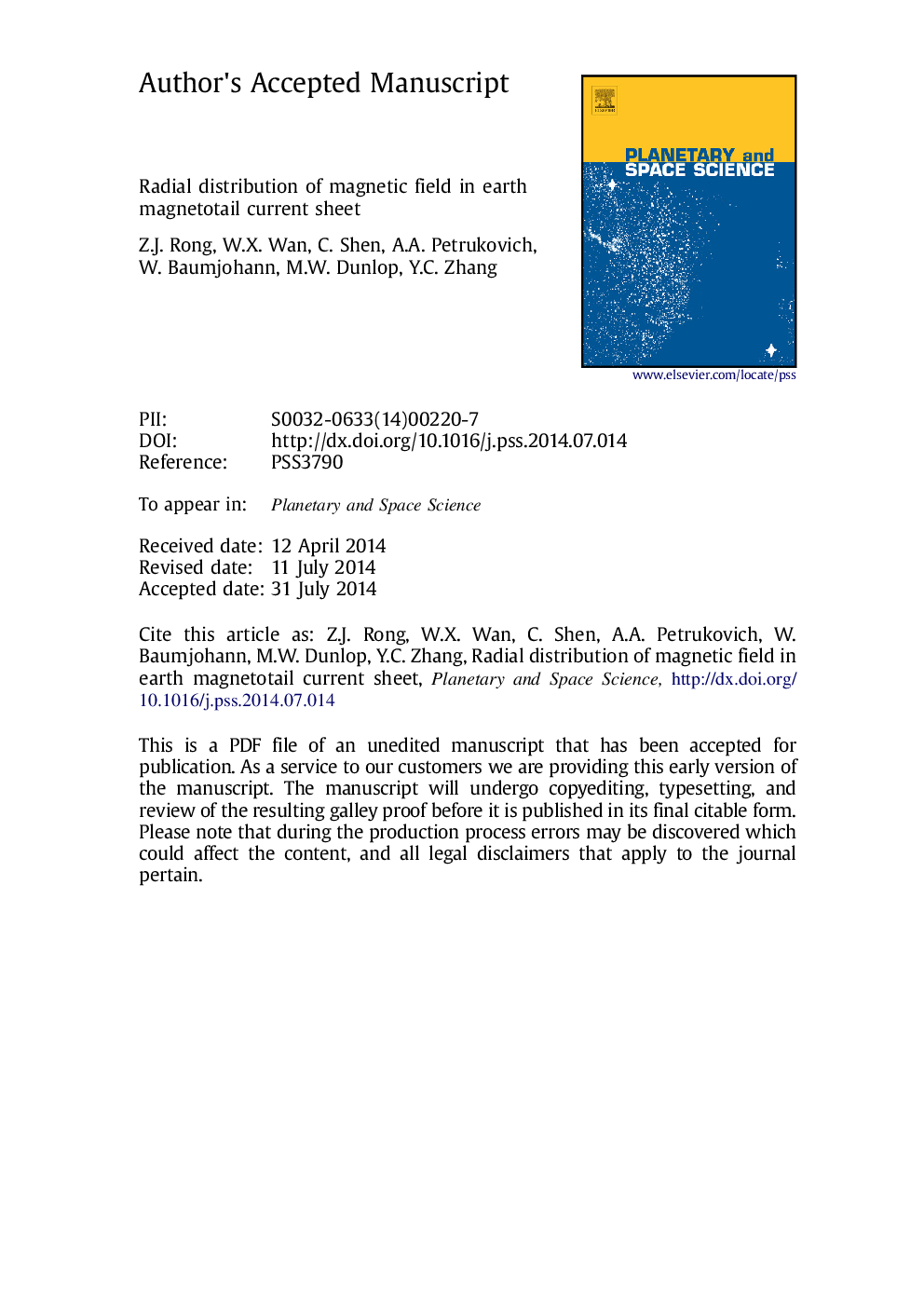| Article ID | Journal | Published Year | Pages | File Type |
|---|---|---|---|---|
| 8143513 | Planetary and Space Science | 2014 | 46 Pages |
Abstract
Knowing the magnetic field distribution in the magnetotail current sheet (CS) is essential for exploring magnetotail dynamics. In this study, using a joint dataset of Cluster/TC-1, the radial profile of the magnetic field in the magnetotail CS with radial distances covering 8100Â nT for active times) and solar wind parameters are statistically surveyed. Our new findings demonstrate that, independent of the activity state, the field strength and Bz component (GSM coordinates) start the monotonic increase prominently as r decreases down to ~11.5RE, which means the dipole field starts to make a significant contribution from there. At least in the surveyed radial range, the Bz component is found to be weaker in the midnight and dusk sectors than that in the dawn sector, displaying a dawn-dusk asymmetry. The occurrence rate of negative Bz in active times also exhibits a similar asymmetric distribution, which implies active dynamics may occur more frequently at midnight and dusk flank. In comparison with that in quiet intervals, several features can be seen in active times: (1) a local Bz minimum between 10.55Â nPa), which may support the dawn-dusk squeezing effect as presented by Miyashita et al. (2010). The CS By is generally correlated with the interplanetary magnetic field (IMF) By component, and the correlation quality is found to be better with higher penetration coefficient (the ratio of CS By to IMF By) when IMF Bz is positive. The implications of the present results are discussed.
Related Topics
Physical Sciences and Engineering
Earth and Planetary Sciences
Geophysics
Authors
Z.J. Rong, W.X. Wan, C. Shen, A.A. Petrukovich, W. Baumjohann, M.W. Dunlop, Y.C. Zhang,
